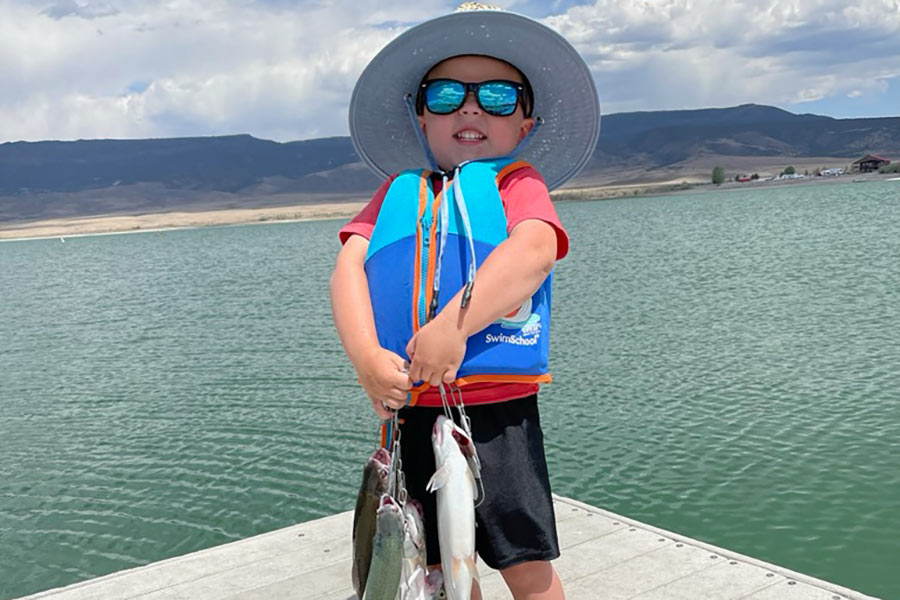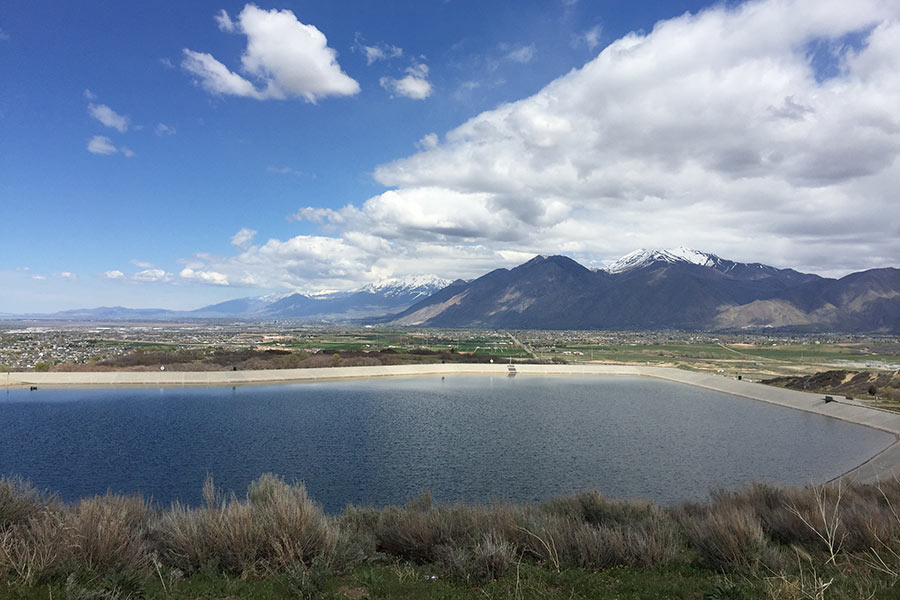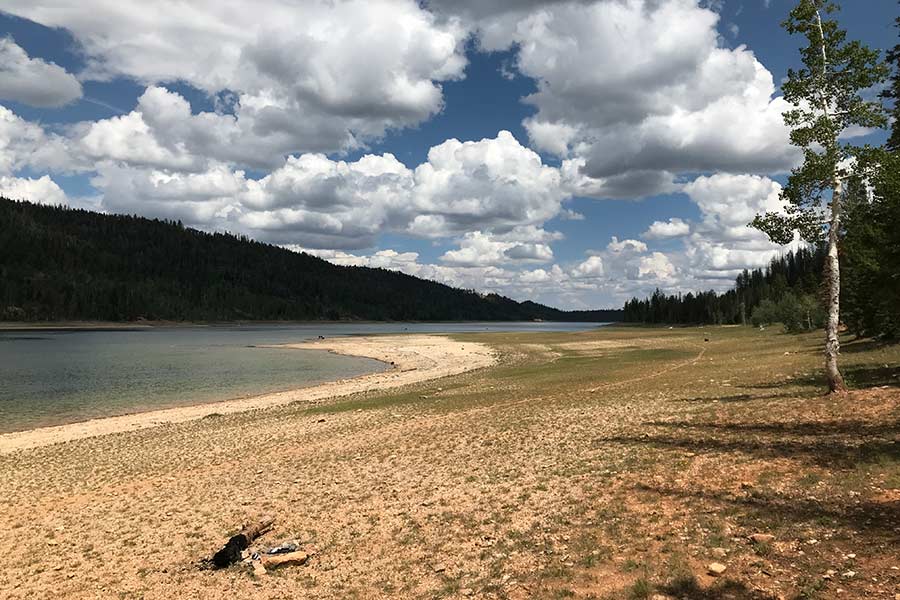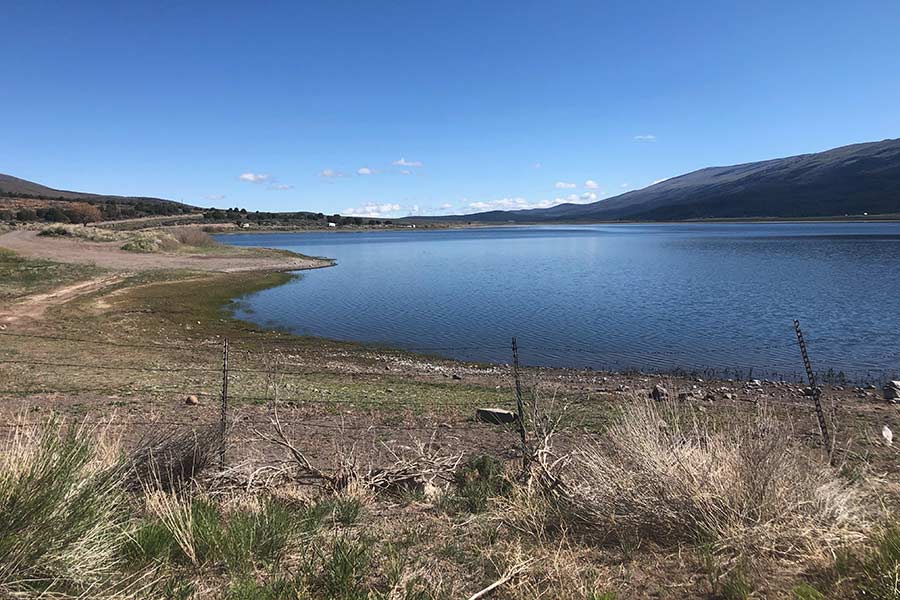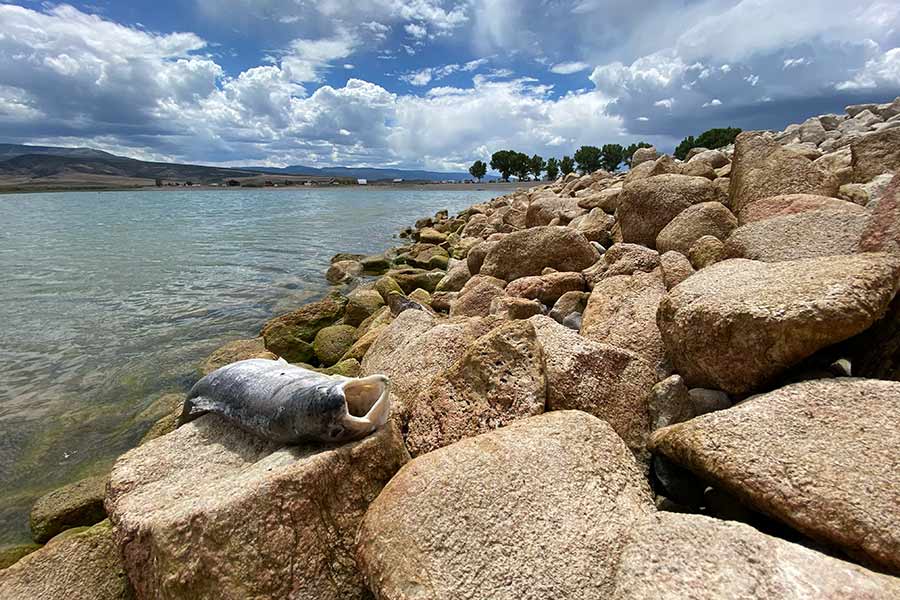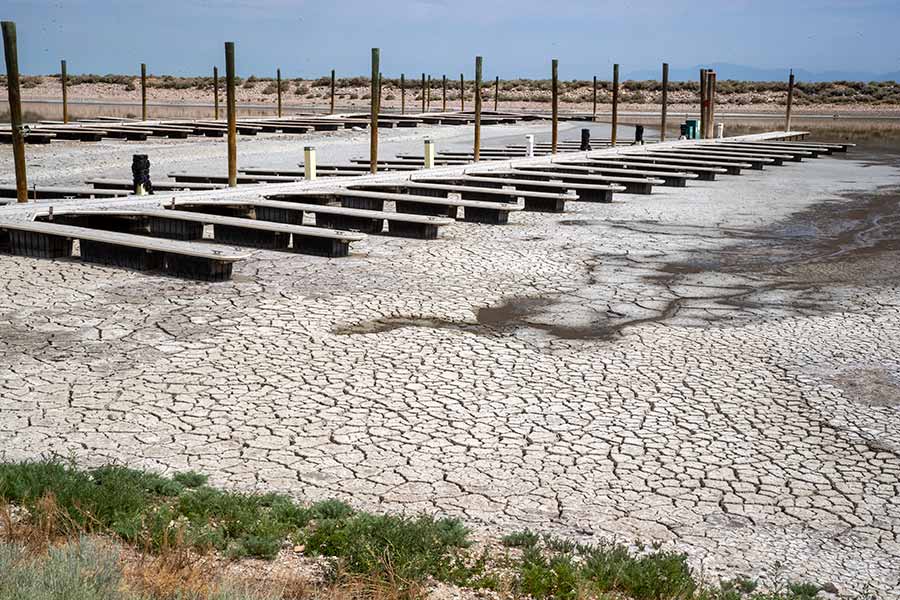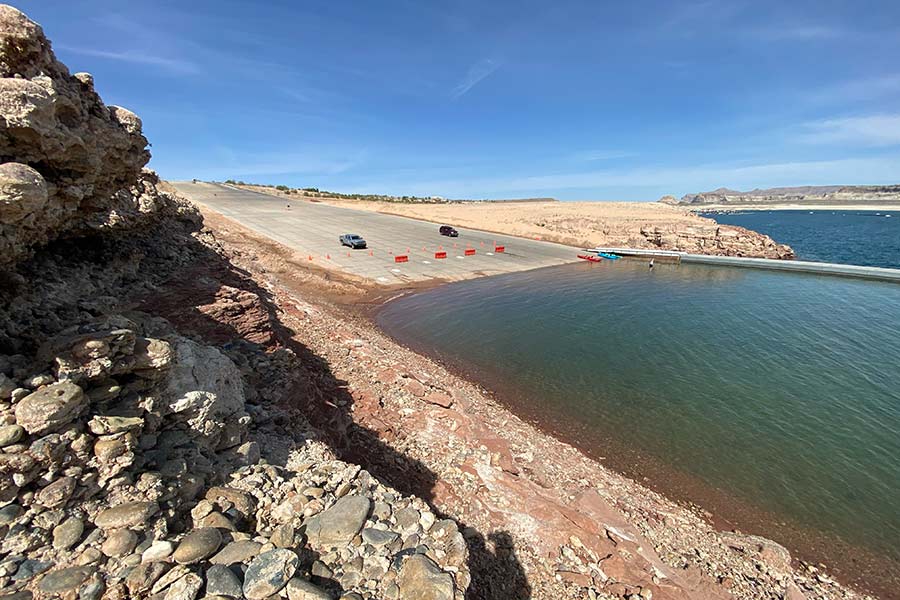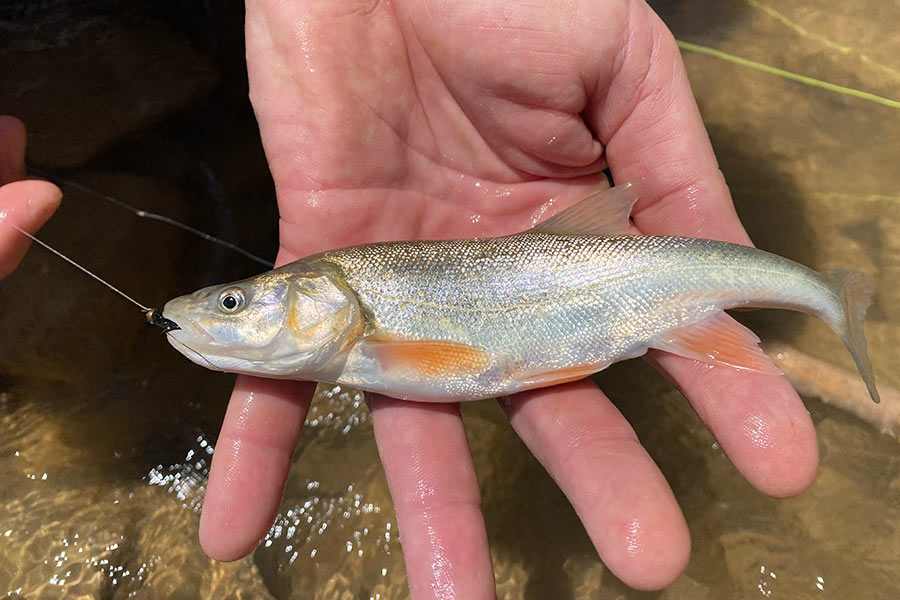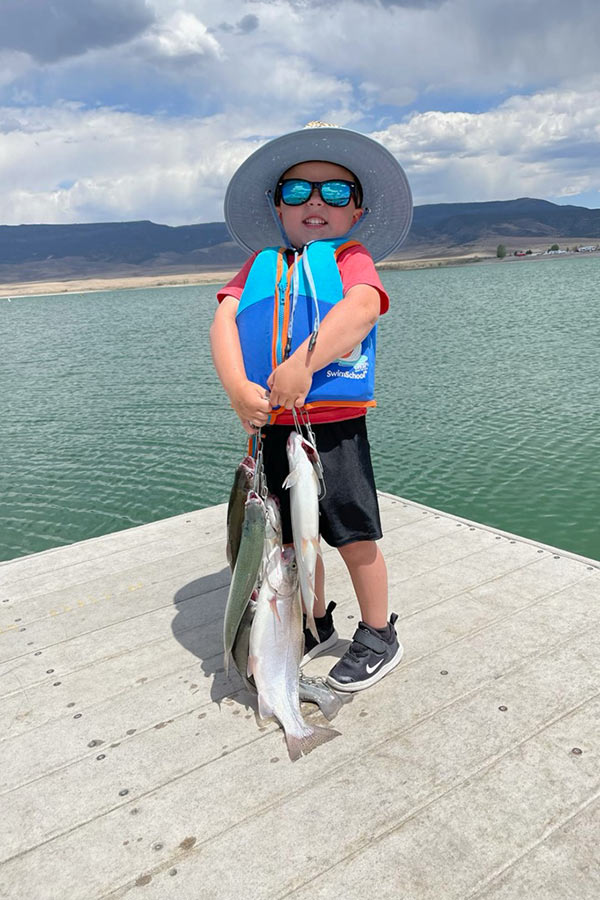Forward-thinking fisheries
How we manage Utah's fisheries today and plan for the future
Randy Oplinger
DWR Sportfish Coordinator
Have you ever wondered how daily fishing limits are set, and why they sometimes vary by waterbody? Or how we determine what types of fish get stocked where, how many are stocked or why we aim for particular stocking dates throughout the year?
Utah's fish stocking and regulations work in concert with one another to conserve fish populations and provide a successful and fun fishing experience for Utah anglers all over the state. Fishing rules — which are outlined annually in the Utah Fishing Guidebook — and stocking strategies are balanced to conserve and improve diverse fish populations, protect natural resources and help anglers be more successful on the water.
Managing fisheries means more than just providing a good fishing experience at an angler's favorite waterbody today — we're proactively planning for years to come.
Today's pressures, tomorrow's projections
In fisheries management, we need to be immediately responsive to local conditions that may vary from season to season. And we must also anticipate some looming increases in fishing pressure due to population growth and statewide challenges to healthy fish habitats. These circumstances will very likely be with us for years to come.
Some examples of these challenges include:
- Reduced water availability due to an overall declining trend in snowpack, as well as extreme drought years when conditions are unusually dry, regardless of the overall drying trend.
- Human population growth leading to more overall angling pressure.
- Changing species preferences among Utah anglers.
Utah's anglers recognize these pressing issues, and we're fortunate that you are as passionate as we are about finding solutions. By working in partnership with habitat conservation groups, community organizations and anglers, we're taking proactive steps to continually improve our fisheries management.
Combating continued drought
You may have first-hand experience with the effects of drought and the trend of declining snowpacks in the form of very low water levels in streams or reservoir drawdowns. Low water levels impact the health of fish populations, with the main symptoms being reduced fish growth rates, increased late-summer fish die offs (summerkills) or overwinter kills.
These events happen randomly in some waters — such as when a reservoir or stream normally has good water levels but occasionally has a bad year — but there are other waters where these events happen regularly. We carefully track reoccurrences, look at water trend data to identify waters where we think we'll have problems in the future and adapt short- and long-term management strategies for specific areas:
- Emergency changes: A short-term response to these conditions may be an emergency regulation change that increases the daily harvest limits at a specific waterbody severely impacted by drought. By increasing harvest, anglers help thin fish populations, which helps the waterbody’s remaining fish have a greater chance of survival without competition.
- Proactive seasonal limit increases: As a long-term management strategy, you may see us enact seasonal regulations that allow for an increased summer harvest in waters that regularly experience summerkill, or increased fall daily limits in waters that routinely experience winterkill. Unlike the emergency daily limits described above, in this case we are talking about permanent regulations that will liberalize harvest on continually-impacted waters during select seasons. These changes are being considered for the next fishing regulatory cycle, which will begin in 2023.
- Stocking strategies: You will also see us shift stocking tactics on continually-impacted waters. We'll stock catchable-sized fish because they will typically live a maximum of one year in these waterbodies (i.e., places where summerkill or winterkill eliminates most fish), so we want to stock fish big enough that anglers can immediately catch them. We will also stock them at optimal times of year to maximize the amount of time fish are in the water. For example, we'll stock waters in the fall that experience summerkill, and in spring we’ll stock waters that experience winterkill. Our goal is to also stock enough fish in these waters to provide good fishing when water conditions are good, while not having a large number of fish in these waters remain when summerkill or winterkill conditions set in.
Drought-impacted waterbodies
More anglers than ever
It's a sentiment we hear a lot, and something we've often experienced ourselves: Anglers who have for years fished a particularly quiet section of stream or secret cove at their local reservoir are seeing more and more lines cast at our favorite spots.
For some context, Utah's statewide fishing participation rate has hovered around 20% for the past 20 years, and we predict that the 20% participation rate will continue into the future. (Speaking of which, don't forget to renew your fishing or combination license before you head out!) However, Utah's population is growing, and by all accounts that will continue. A growing population combined with a stable participation rate means that we need to plan for more anglers in the future.
Some strategies for addressing these challenges include:
- Encouraging people to fish less-used waters to help minimize impacts. The combination of high angler pressure and lowering water levels particularly impacts traditionally popular waterbodies and the overall positive angler experience. You can explore the interactive Fish Utah map to find a new-to-you place to fish, or subscribe to our weekly fishing reports to get forecasts for waterbodies in your region.
- Diversifying the species we stock. The goal here is to provide multiple fishing opportunities simultaneously on the same water to help disperse anglers by their preferences. For example, rainbow trout are a species that are easily caught along the shore, but kokanee salmon are a species that are easier to catch from a boat. By adding kokanee into some of our rainbow waters, we hope some anglers will move off the shore and onto boats, which should help disperse people and fishing pressure across a larger area. Or, if rainbow fishing is currently lousy, but kokanee fishing is good, we are helping ensure that there is almost always one species on a lake that is fishing well.
- Developing new fishing opportunities. For example, we are going to recommend to the Utah Wildlife Board the reclassification of roundtail chub as a sportfish species. That reclassification would create a new fishing opportunity. Additionally, the roundtail is found in the Colorado River and its tributaries — a river system that is not heavily fished — which will draw anglers to an under-utilized water, again helping to spread pressure.
- Planning for generations of fishing. We are trying to stock more fertile (i.e., can reproduce) fish in our heaviest-fished waters. This helps reduce our reliance on stocking, which also helps maintain our fisheries despite a growing population of anglers. This is a case-by-case determination: We only do this when the use of fertile fish makes sense from a management perspective (for example, when we have no concerns about rainbow trout hybridizing with cutthroat trout).
What kinds of fish go where?
Preferences for desirable sportfish species change over time. For example, we are seeing that Utah's anglers are progressively becoming less interested in catching trout and are more interested in catching other species. (Still, 70% of our anglers prefer trout.)
We are responding by stocking more warmwater fish where they're appropriate. Our goal is to provide more fishing opportunities in proportion to the interest among our anglers. For example, if 1% of our anglers prefer to catch tiger muskie, then our goal is to have tiger muskie in 1% of our fisheries. We also want to provide these opportunities within a radius that anglers are willing to drive for their preferred fishing experience.
Get involved
Wherever you fish — whether it's a big reservoir, a slow river or a bustling community pond — you probably have an opinion about fishing in Utah. In fact, by purchasing or renewing your annual fishing or combination license, you directly fund important habitat and wildlife conservation work throughout Utah.
Your suggestions can help shape final recommendations for our regulatory guidebooks and assist biologists in identifying issues that need more scrutiny and discussion. This year, fisheries biologists will conduct a random survey of anglers. If you receive the 2023–24 Fishing Proposals survey by email, we encourage you to take it and to write in any suggestions you have for additional changes.
Even if you don't receive the survey, you can share your recommendations. Our biologists continually gather public input through phone calls and emails to DWR offices, internet forums, as well as more formal creel surveys, the Fish Utah interactive website and targeted email questionnaires. Although we may not be able to implement every suggestion, we review all of them. Some suggestions are in direct conflict with each other and may require a compromise recommendation. In general, though, your feedback lets our biologists know which topics are your highest priorities.



